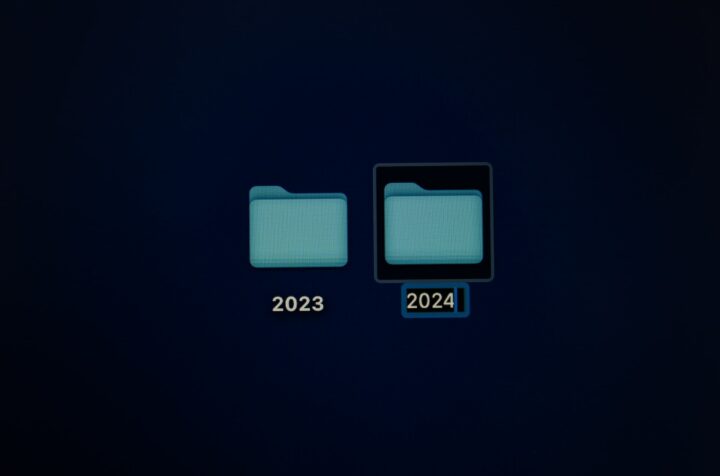"Let’s create the customer experience that we all love to feel when we ourselves are the customer."
Back in the day, we all speculated about the future in some way. Some believed in flying cars, others in robots that would rule the world. If you were Team Robot, you were right. Not that they rule the world, but they were invented to help people and make their lives easier. And in that, they do rule the world.
In the last two years, thanks to digital advances, it has been possible to somehow transfer everything into the virtual world. Sports? Online. Meetings? Online. Shopping? Online. Even those who prefer going to stores had to settle for online shopping.
But with new inventions come new challenges. How can you take advantage of the latest technology for yourself and your customers before your competitors do?
Virtual experiences replace reality
Virtual became more than just an option, it became the only option and thus had to replace the in-store experience. And when you want a new pair of jeans, you don’t want to wait 2-3 business days for them. You want them immediately. This raises the bar even higher for retailers due to the increasing demands of their customers. Especially in customer support, the speed of real humans is no longer enough to satisfy consumer needs. But that’s exactly the point, because if you want to continue speculating about the future of your business, you should strive to make your customers happy. In other words, the future of your business is happy customers.
Artificial intelligence, bots, automation
The time when people thought they only needed temporary replacements is over. Old habits have already been abandoned and new ones created. The time for change has come and it is now. That’s why it’s so important to make the right decisions, because they have a big influence on the development of the future.
Customers of tomorrow
Now, before you start speculating about that future, let a professional help you. We’re not talking about a therapist here, but someone like a global thought leader in customer experience – Steven Van Belleghem.
As the award-winning author of five international best-selling books about customer experience, he can certainly be called a CX guru, and has given more than 1,250 presentations in over 40 countries around the world.
I would say, if you want to stop speculating about the future of this topic, you should take the chance to listen to him in our third virtual Digital Thinkers Forum on March 30, 16:30 CEST. We’re happy that he’ll add it to his impressive list of presentations and excited for him to share his knowledge with us and our participants.
Sign up for free now and take part in our Zoom event! Since we don’t want to leave you out in the cold until then, we’d like to show you a part of what we have already learned from his eBook, The CX Leaders manual to customer excellence, in which he not only shares his knowledge with readers but also what we can pick up from the top 10 CX leaders.
What is customer centricity?
Customers are people. And people are all different and have individual needs. As a human in a decision-making position of an organization, it’s not about meeting the needs of one single customer, but understanding them all in order to find a solution that solves everyone’s problems – or at least as many as possible.
A big bang does not always have a big impact
The world is fast-moving these days. A change you make today could have a huge impact on tomorrow, but probably not the month after. That’s why it’s more important than ever to focus on small, significant changes throughout the year rather than one big thing that’s all but forgotten by the end of it. Making continuous changes will always keep you in a safer and more favorable position.
Do not try to be a jack-of-all trades
As mentioned previously, all people are individuals with different needs. Therefore, there will always be problems that cannot be 100% solved. If you focus too much on the minority who don’t like the things you put into the world, you neglect the majority who do. Strive to be almost perfect, but not 100%.
Sometimes metrics lie too
Don’t rely exclusively on numbers and statistics. Especially when it comes to experience, there are always emotions involved. So, if you measure lead quantity without lead quality, you might have an impressive number that doesn’t really add up to a win. Quality comes before quantity because emotions are hard to measure.
The golden rules of customer experience
As you may have noticed, Steven’s eBook, The CX Leaders manual to customer excellence, is not just something to skim through. It’s a manual that contains valuable tips and tricks that will help you succeed in the present and the future. That’s why we want to share his golden rules, so you know what level of knowledge you’re attaining in this book (and in our Digital Thinkers Forum).
Create a concrete and appealing vision
A strong but attainable vision is at the heart of successful strategies and the same goes for anything CX-related. “Putting the client first” isn’t detailed enough to enthuse and engage your team. You need to clarify the consumer’s problem, what you will be able to accomplish to improve their lives, and the mindset that should be linked with it. Start with an intention attitude rather than a KPI perspective, and make sure you’re providing real value to your clients. Make sure your vision is both attainable and appealing.
Make your CX plan a reality for everyone
The vision and enthusiasm for the customer experience often holds a disconnect between management and the rest of the organization. It is essential that you figure out how to apply your high-level strategy to each and every person’s life and circumstances. Each employee should be aware of their role in this customer-connection strategy. This gives individuals a sense of purpose as well as a strong connection to your goal. To be honest, there isn’t a fast method to get there. This dish does not contain a secret ingredient. You’ll need to figure out a way to persuade each member of your team.
Small steps also bring you forward
One of the most typical errors for businesses is developing an enormous idea and strategy centered on customer experience. Their vision expands to the point of being absolutely monstrous in size and complexity. However, most of the time, the execution goes horribly wrong. It’s crucial at this point to make a list of various little changes that will improve the experience for clients. One important insight is that doing 100 minor tasks that improve customer service will always win over completing a major project. Above all, the impact will be significantly higher.
Augmented intelligence
Another important CX basic is figuring out how to use technology to improve human service levels. Prior to the pandemic, while Steven was still doing in-person keynotes, he regularly had to spend the night in a hotel, some of which he visited numerous times. As a result, he’d find himself checking in with a pleasant human at the reception desk, only to be greeted with the inane query, “Welcome, Mr. Van Belleghem, is this your first time here?”
After that, he had to explain that this was his 20th visit, which was always difficult. He didn’t blame the helpful employee, of course. He did, however, express his displeasure with the company. A single employee will not be able to recognize everyone. A hotel chain, on the other hand, might have a system in place that shows the staff the client’s history when they type in a name. He calls it IA (Intelligence Augmented). It all comes down to using basic technology to make sure your “people” say the right thing at the right moment.
When you see an improvement, celebrate your success
Many companies never seem to be pleased with the results they achieve for their clients, which is unfortunate. They appear to be locked in this “not good enough” mindset, trying to achieve perfection – which, of course, they will never achieve – before they can celebrate. It’s excellent to be goal-oriented and have a steady perspective on your progress. However, celebrating small wins in improving the client experience is crucial for your team’s morale. You’ll see that everyone gets a burst of energy immediately.
What’s even better is that after ten celebrations, you’ll be able to look back and appreciate just how far you’ve come. Your staff will feel that things are genuinely moving forward if you celebrate accomplishment. Even if it seems like a trivial matter.
Direct customer feedback for everyone
Did you see some of the football games played in empty stadiums during the pandemic? Not the most motivating and invigorating sight. Statistics show that many football teams have suffered as well. The explanation for this is simple: football players are accustomed to receiving immediate feedback from their “clients”, the fans. This creates a sense of urgency in them to play at their best. And when they score a goal, they celebrate. Every organization needs the same strategy. If you work in a firm where staff doesn’t receive direct feedback from clients, you are passing up an opportunity.
Every staff member should be able to experience the clients’ “oohs” and “aahs.” This results in a better degree of consumer involvement and will also lead to better decisions.
Play the friction hunter game over and over again
Steven has played the friction hunter game with clients several times, and it is one of his favorites. You effectively convert every employee into a friction hunter, asking them to look for any form of annoyance or problem throughout the customer journey. The key point to remember is that instead of focusing on the broad picture, you want them to search for details: a list of minor annoyances that are simple to fix. Then, for each friction, write a name next to it and assign that person four weeks to solve it. When that time has gone, you reassemble the team, analyze what worked and what didn’t, and fix what needs to be done. Then you play that game – over and over again. They don’t have to be major changes (though they may be); they can be as simple as relocating a login button on your website to make it easier to locate and access. After a period, you’ll have created a culture in which individuals are extremely attentive to the intricacies of the customer experience, which will improve overall quality towards your clients.
Ask joy instead of sadness, anger, disgust, and fear
Disney’s “Inside Out,” which depicts how the human brain – and, by implication, the consumer brain – works, is one of Steven’s all-time favorite films. We are driven by five primary emotions, four of which are negative: sadness, anger, disgust, and fear. We only have one positive basic feeling, joy, which also happens to be the star of the film. As a result, realizing that 80 percent of the feelings in our minds are negative can help us understand why we complain so much or why our clients complain so much.
This is not our fault; it is the way our minds are wired. So, if you have a meeting about your clients tomorrow and feel like negative emotions are taking over, get up and ask, “What would Joy do?” And delegate decision-making authority in your company to her. Allow positive emotions to guide your decisions. You’ll see that this eventually leads to an increase in the number of satisfied customers. As an example, tailor your online return policy to suit all of your honest customers rather than the 10% who may be taking advantage of your policy. If you don’t, the other 90% will be punished for something they would never do and would be dissatisfied. Prioritize joy at all times.
Fix it – always
When something goes wrong between you and a customer, don’t look for the person who caused the error, whether it’s an employee or a customer. Attempting to do so is a waste of time, effort, and a good relationship. Concentrate solely on one thing: resolving the issue as fast and effectively as possible. Failure to do so will cause the client to wait an unreasonable amount of time for the problem to be fixed, and they will become enraged at being blamed. In the end, you’ll have to address the problem anyways, so why not do it now rather than risk ruining a solid customer relationship?
Joy will have fled the building if you don’t act quickly. Keep your attention on the customer and skip the annoying part. Of course, it’s always beneficial to review what and how something happened after the fact – without involving the customer – and then correct that process so it doesn’t happen again. Even if the customer did make a mistake, try to figure out why and how it could have been avoided by making your website clearer or communicating better. But keep in mind: always fix it.

Long term investments beat short term expectations
Because of the tyranny of Return On Investment (ROI), this is a very difficult question for many firms. Is your company looking for a return on its investment? Naturally, it is! However, Steven believes that you must address client expectations with both a long-term and short-term perspective. For example, if you do a random act of kindness, don’t expect people to buy more as a result. Don’t expect people to return the favor if you’ve done something kind, created a terrific campaign, or sent them a present. Simply remind yourself that this is the best way to establish a stable and honest long-term partnership.
Continue in this manner, without looking for a quick fix. Basically, it’s the same as going to the gym. You won’t see any benefits if you go to the gym for four weeks. Same thing if you go for eight weeks. Isn’t the conclusion then that it doesn’t work? Many people stop going to the gym after two months since they don’t notice any results. At the same time, we’re all aware that if you want to see a notable outcome, you need to invest more time and effort. The customer experience needs to be tackled in the same way. After two months, you may not see a change in certain attempts. Don’t conclude that they’re ineffective. Consider them to be a long-term investment.
Be fast – and don’t forget the fun part
This is one of Steven’s favorite bits of advice, and it’s also one of the simplest. If you want to be successful, you must be quick, simple, and fun. A lot of businesses focus on the quick and simple element while overlooking the enjoyable component. People want to be entertained, to be amazed, and to be shocked. Make an investment in that area. Customers that are satisfied generate happy employees, and the best part is that it doesn’t have to be a complicated or large adjustment. Simply focus on offering enjoyable experiences for your clients.
Offer your customers emotional convenience
Over the last ten years, we’ve put a priority on transactional precision and digital convenience in order to provide a better experience. However, digital convenience has devolved into a commodity. This is what people anticipate nowadays, and it no longer distinguishes us or provides us with an advantage. Nowadays, the task is to provide “emotional comfort.” You must understand the person behind the customer: What is the “movie” he sees in his mind about his future? What are his dreams, desires, objectives, and fears? Try to take an active role in this process. Make absolutely sure you assist them emotionally in order to provide more value to their life. This section is all about assisting the person behind the consumer.
Give power to your employees
This last point really makes all the difference. If you truly want to have a significant influence on communication, you must ensure that your frontline personnel are empowered to make decisions in the best interests of the customer. If something goes wrong, make sure they don’t say, “I’ll ask my boss how to solve this.” Instead, give them the authority to address the problem swiftly and effectively on their own, without regard for the cost or the repercussions. That is the name of the game. Give them that freedom, that empowerment, and help them through the process. This will have a significant influence on how your customers are handled and how they view your company’s culture.
Always take the customer’s side
When evaluating how customer-focused a company is, ask this simple question: “How do you react when your own interests and those of your customers conflict?” Consider a bank customer who has a dormant account that hasn’t been used in five years. Despite the fact that this account is silent, he pays an annual fee to service and maintain it. How does a bank deal with this when it has a large number of these customers? Will you remain silent and continue to collect this simple and easy money? Or do you go out of your way to approach these customers and say, “Hey, you have a dormant account, we need to talk.” Are you going to “just” suggest that they close the account because they’re getting absolutely no value for their money? Or will you take it a step further and say, “Hey, you’ve been paying us for the last five years for no reason. We’re going to repay you right away.” The emphasis on the customer shifts from the first to the second scenario. And it’s this mindset that will help you determine how customer-centric you are. So, if you’re unsure or want to improve, consider how you and your company handle these types of competing interests.
"I dream of a world with happy customers that share their excitement with all of their friends and family."
All these points were just a part of what there is to learn from Steven’s eBook The CX Leaders manual to customer excellence. He has much more to share with us. If you want to find out, sign up now for free and join Testbird’s third Digital Thinkers Forum on March 30 at 16:30 CEST, where Steven Van Belleghem will reveal what tomorrow’s customers want and how to deliver it to them using the latest technologies.








